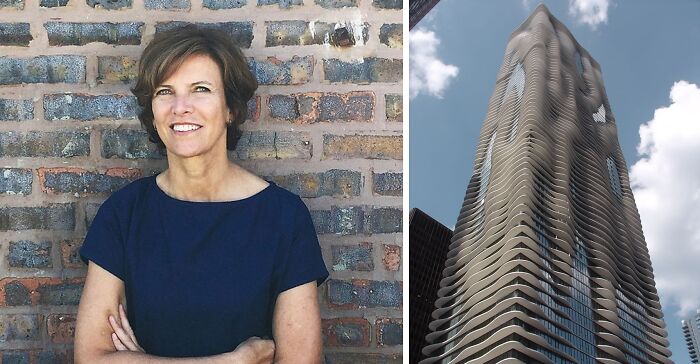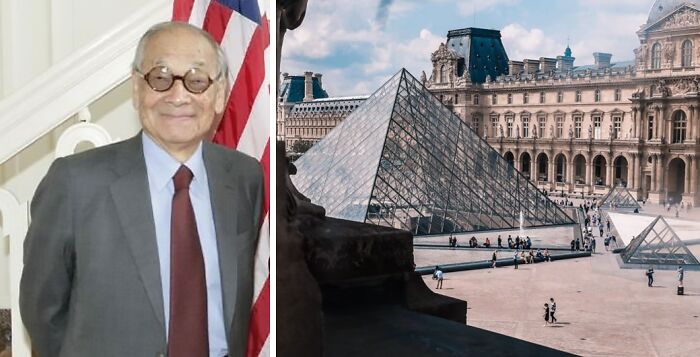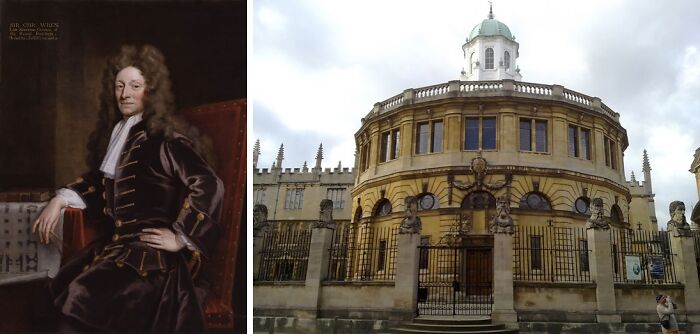With construction workers being the people most commonly associated with beautiful buildings, it is easy to forget that they were all designed by the most famous architects in the world. They are the minds behind every door and window placement in the building. It should be a crime how much famous architects get overlooked. Without them, workers would have to work only with an idea. But those who do become famous are usually known for their unique styles and the beauty of the buildings.
Every famous architect has a style of their own. The tallest skyscrapers in the world, the longest bridges over rivers, and the most beautiful houses on cliffsides were designed with a certain style and design in mind. After all, to stand out, the design has to be unique from other architects’ ones. For this reason, world-famous architects are known for the uniqueness of their styles and not for their similarity to other buildings. But fame can also come from the beauty that architects capture in a building. There are many architects famous for the beauty of their buildings alone. Antoni Gaudí, Oscar Niemeyer, and many more created beautiful, long-standing buildings that are unique in their styles.
With so many buildings in the world able to capture our eyes, it might be time to check out who designed them in the first place. In the list below, we have compiled a list of well-known architects and the iconic buildings they helped create. Did the architect capture your attention? Upvote it. On the other hand, if you know more about the architects and the buildings they designed, share your knowledge in the comments below.
This post may include affiliate links.
Antoni Gaudí - La Sagrada Familia
Born in the region of Catalonia, Antoni Gaudí spent a big part of his career working in Barcelona as an architect on some of the most famous projects. Not only are some of his buildings included in the UNESCO World Heritage Site list, but his most famous one, La Sagrada Familia, an unfinished cathedral, is the largest in Europe.
But you have to see the inside to really appreciate his work. The colors that glow though out the interior when the sun shines through the stained glass is spectacular!
Jeanne Gang - Aqua Tower
One of the rare female architects to win significant commissions is Jeanne Gang. The Aqua, an 82-story residential skyscraper, one of the tallest buildings to have ever been designed by a woman, was created by Gang. The building includes some not-so-ordinary facades that are common in contemporary architecture.
"The Aqua" is an apt name for this building. The floors look like the gills of a fish. It's very unusual.
Mimar Sinan - Selimiye Mosque & Süleymaniye Mosque
Mimar Sinan was the Ottoman version of Michelangelo and designed some beautiful buildings in the Empire. Sinan designed around 300 buildings, but they are minuscule compared to the Selimiye and Süleymaniye mosques. The mosques were symbols of the Ottoman Empire's strength and represented how brilliant Sinan was.
Frank Lloyd Wright - Fallingwater
Wright revolutionized 20th-century architecture, and his background in the Midwest helped him form his unique style. Due to the prevalent Victorian aesthetic, Wright developed the Prairie house design. Fallingwater, his most well-known structure, has stacked rectangular balconies that appear to float over the house's natural waterfall.
Michelangelo Buonarroti - Dome Of St. Peter's Basilica Of Vatican City
Let’s jump back to older times and the figure known more for his art — Michelangelo Buonarroti. While he is already famous for his sculptures like David, he is also the mind behind the dome of St. Peter's Basilica in Vatican City. The dome, an iconic part of the building, is full of Renaissance and Gothic details and inspired other structures, like the dome on the Capitol.
It still amazes me how they designed and built these without slide rules, computers or large cranes. And they're still standing
Daniel Burnham - The Flatiron
Nothing is as iconic as the Flatiron building in New York, but very few know who designed it. Daniel Burnham, an American architect and one of the minds behind the Flatiron, is also known as one of the first people to contribute to the design of the first skyscraper, the Montauk Building.
Ieoh Ming Pei - Louvre Museum Pyramid
Chinese American architect Ieoh Ming Pei is renowned for his distinctive glass and steel structures. He was active in the 20th century. His most well-known works include the Louvre Museum Pyramid in Paris, which uses a lot of triangles in the final design. These days, the glass pyramid is seen as a masterpiece.
Absolutely hideous. Not only did he not pay any attention to the area his gross triangle greenhouse monstrosity was being foisted on the public, but it sitting Attached to a beautiful architectural masterpiece should encourage Londoner's to pay to move it to Egypt for a tourist information booth that offers pre-made sandwiches and cans of soda
Buckminster Fuller - Montreal Biosphere
Buckminster Fuller is one of the few architects to have gotten a patent for the ways he designed buildings. His geodesic dome designs, which he came up with accidentally, played an important part in the Montreal Biosphere building. Built for EXPO 67, the Biosphere was designed with sustainability in mind.
I see this every year when I watch the Canadian Grand Prix, as they always show this in the pre-footage.
Frank Gehry - Guggenheim Museum
Frank Gehry, a Canadian American architect, is known for his Guggenheim Museum, which is famous for positively impacting the local economy. The museum brought in so much money that the local economy of Bilbao, Spain, which had high levels of poverty and unemployment, became one of the leading economic centers of the region.
Zaha Hadid - 520 West 28th Street
Eleven floors up, with windows around, 520 West 28th Street, known otherwise as the Zaha Hadid Building, is the only residential building that Zaha Hadid designed. Winner of the Pritzker Prize, Hadid is known for her expressionistic style, which is visible in this building. While she did design more buildings, the New York one has become the most famous one.
She's one of the greatest, in my opinion. So many beautiful works, each encompassing it's own unique fluidity.
Imhotep - The Pharaoh's Tomb, The Step Pyramid At Saqqara
Building in a sandy landscape with stone is an activity enjoyed by everyone in the world, but Imhotep took it a step further and built some of the oldest structures in the world. Imhotep, an Egyptian architect and the chancellor of Djoser, supposedly built the Step Pyramid at Saqqara, the first known structure to use stone as support.
Sir Christopher Wren - Sheldonian Theatre At Oxford
Sir Christopher Wren, an astronomy professor at Oxford, was also an architect. A student of the baroque styles of Italy and France, Wren was commissioned to design the Sheldonian Theatre at Oxford. While the theater got destroyed during the Oxford fires, this didn’t stop him from exploring the world of architecture.
Eero Saarinen - TWA Flight Center At JFK Airport
From chairs to airport centers, Eero Saarinen designed some iconic things during his career. The Tulip chair? Saarinen designed it. He was the master of futurist and modernist architecture, and it's seen in the TWA Flight Center at JFK airport. Slick and simple, the building is a welcoming sight for any tourist.
William Pereira - UCI Libraries Gateway Study Center & The Geisel Library
William Pereira went from designing Hollywood sets to creating some of the greatest buildings in the futuristic style he is known for. Some buildings that capture this style in the best possible way are the Geisel Library and the UCI Libraries Gateway Study Center. Both look like they were ripped from the future and placed in the modern day.
Norman Foster - Mary Axe Aka The Gerkin
From the circular Apple Park to the tall Gherkin — Sir Norman Foster designed them with style and beauty in mind. The Gherkin might be the more memorable of the two since it perfectly captures neo-futurism with the use of windows and slick, eye-catching designs all over the building.
30 St Mary Axe - [from Wikipedia] The street name may derive from a combination of the [now demolished] church dedicated to the Virgin Mary and a neighbouring tavern which prominently displayed a sign with an image of an axe, or simply from the church name itself, which may have come from the axes used by the Worshipful Company of Skinners, who were patrons. The sign of an axe is reported to have been present over the east end of the church.
Santiago Calatrava - Transit Hub For The World Trade Center
Not every day do architects get to design something in the Big Apple of New York. So Santiago Calatrava, a Spanish architect, had to be happy to design an addition to the World Trade Center. The Transit Hub of WTC, known less commonly as PATH station, is one of the more famous buildings that Calatvara designed.
I've not been too impressed with this guy, but the Oculus is something else, although the Port Authority could take a look at improving the signage (they can afford it, the PATH ticket machine stole my $10.00)
David Adjaye - Smithsonian National Museum Of African American History & Culture
Sir David Adjaye, during his earlier years, was surrounded by many different architectural styles due to traveling with his diplomat father. Thus, when he and his business partner won the chance to design a Smithsonian National Museum dedicated to African American history, they came up with one of the most creative and unique designs ever.
Oscar Niemeyer - Catedral Metropolitana De Brasilia
Modernist architectural design wouldn’t be so well established and famous without the work of Oscar Niemeyer, a Brazilian architect. His most famous work, Catedral Metropolitana De Brasília, stands in the capital city of Brazil. Not only did he create the design for the building, but he helped design the whole capital city.
Louis Henry Sullivan - World's Fair Transportation Building
One of the key figures of the Chicago School of Architecture was Louis Sullivan. The Transportation Building designed by Sullivan and his colleagues is the best example of his masterful design. While it might seem simple in its design, the amount of detail present is jaw-dropping.
Some would say that the Wainwright Building in Saint Louis is his greatest and most noteworthy accomplishment.
Wolf D. Prix - Bmw Buildings In Munich
Deconstructivism is an architectural style whose main point is to break the traditional rules of design to produce more unique buildings. The BMW Welt and the European Central Bank building were designed by the mind of Wolf D. Prix. The BMW Welt especially captures the style of deconstructivism in the best possible way.
Renzo Piano - The Shard
Renzo Piano, an architect from Italy, is not well known for having a distinctive aesthetic. As opposed to this, his structures have been varied, ranging from neo-brutalism to the beautiful, airy. His tallest structure to date is The Shard in London, a 95-story glass and steel skyscraper with a dramatically tapering shape.
Ludwig Mies Van Der Rohe - Barcelona Pavilion
Mies van der Rohe, a German architect, reduced the building to its most basic geometric shapes, paving the path for minimalism. His designs stressed efficiency and logic as the path to beauty. The Barcelona Pavilion is an example of this architectural philosophy and has become quite important for modern architecture.
Rem Koolhaas - China Central Television HQ
An architect is both a designer and a theorist at the same time. Rem Koolhaas was given a hard task — to design a building in a seismic zone in China. What Koolhaas came up with was pretty innovative. Chinese Central Television HQ, more commonly known as "Big Pants" by the locals, has 54 stories overall and is the most famous building designed by Koolhaas.
Arata Isozaki - Shanghai Symphony Hall
Sometimes, war can influence the mind of an architect, like the one of Arata Isozaki. Seeing the destruction that came into Japan, Isozaki studied architecture and went on to have quite a career. A fan of the Metabolist movement in his earlier career, Isozaki went on to design some incredible pieces, like the Shanghai Symphony Hall.
Richard Rogers - Pompidou Center
If we want to feel like we live in the future, architects must push us towards it, and Richard Rogers is one of the famous ones for doing just that. Known for his high-tech and constructivist designs, Rogers garnered fame thanks to the Pompidou Center in France. The building captured the styles of the future and postmodernism.
Philip Johnson - The Glass House
Architecture is art too, and Philip Johnson proves this with the buildings he designed. One of the most famous representatives of modern architecture, Johnson used this style to create the famous Glass House. It removes the line between inside and outside by placing windows everywhere.
Note: Not suitable in developments or housing estates. Must have property around it.
Gordon Bunshaft - Manufacturers Trust Company & Yale University Beinecke Rare Book And Manuscript Library
While he might not have been the first to use the modernist architectural style in New York, Gordon Bunshaft was the one to design some of the best buildings using the style in the Big Apple. A 20th-century architect, Bunshaft designed some of the best buildings in the city — the Yale University Beinecke Rare Book And Manuscript Library and the Manufacturers Trust Company.
Louis Kahn - Salk Institute
Some buildings are residential, and others house several offices. The Salk Institute is the place where science gets made, and the architectural style of the main building had to represent it. Louis Kahn, an Estonian-born architect, designed the Salk Institute to look rough and tough and to withstand the test of time.
Agreed. Certainly the Sydney Opera House is iconic, you only have to see a silhouette of it and people know you are talking about Australia, and some would even know it was Utzon who designed it (the outside at least). Many of these I wouldn't even have a clue where they were let alone who designed them if there wasn't a label
The Taj Hotel Building is iconic... I would also consider the old Indian parliament building to be iconic... Check out Lakshmi Vilas Palace in Baroda... so many old heritage buildings in India
Agreed. Certainly the Sydney Opera House is iconic, you only have to see a silhouette of it and people know you are talking about Australia, and some would even know it was Utzon who designed it (the outside at least). Many of these I wouldn't even have a clue where they were let alone who designed them if there wasn't a label
The Taj Hotel Building is iconic... I would also consider the old Indian parliament building to be iconic... Check out Lakshmi Vilas Palace in Baroda... so many old heritage buildings in India

 Dark Mode
Dark Mode 

 No fees, cancel anytime
No fees, cancel anytime 








































































































